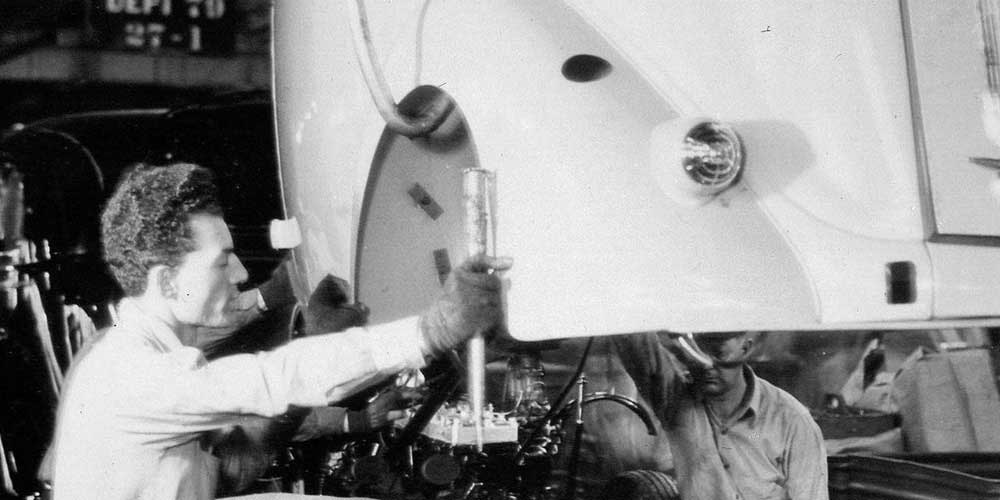By Robert Tate, Automotive Historian and Researcher
Images courtesy of the National Automotive History Collection
Posted: 10.11.2016
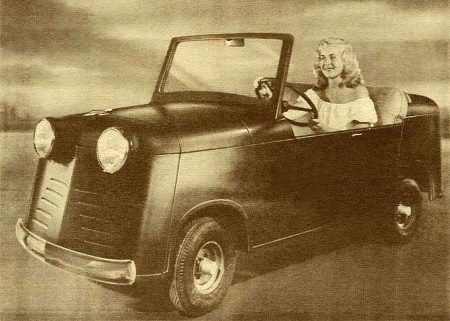
Throughout the great accomplishments of automotive history, some people have never heard about a small car called the Town Shopper which was a prototype concept idea that was designed after the war during the late 1940s.
The Town Shopper concept model was an idea generated from the mind of S. A. Williams. This economy car was designed for short trips to the store rather than for highway usage.
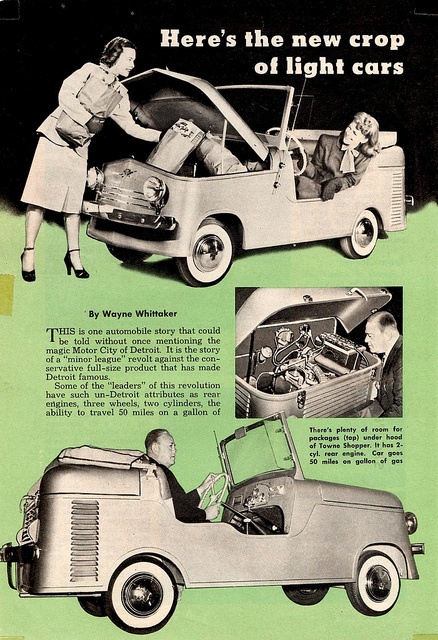
This was a good idea considering it only had a 10.6 air-cooled type engine. It also had a single aluminum body with no doors. The engine was located in the rear, and the hood could open to receive parcels along with one’s luggage. The model was built only as a convertible and with a single seat for two passengers when traveling.
The concept model offered an automatic clutch with two speeds – forward and reverse. The model was designed and put together at the time by a newly-organized international motor car company in San Diego, Calif. called the Carter Motor Corporation. The model weighed 600 pounds and all of the parts were made of aluminum. The overall length was a 130 inches long.
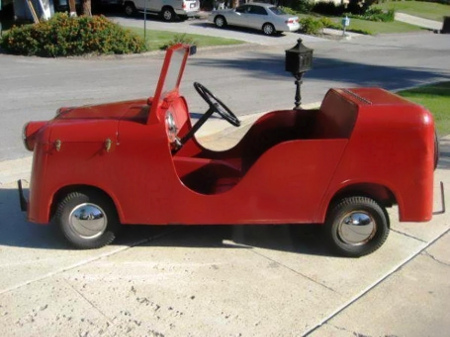
The year was 1948, and most Americans were getting acclimated to the post-war events that were taking place in our country. In the beginning, the goal and future plans for the Town Shopper was to start manufacturing 100 cars a day for the consumer market. The Town Shopper was aimed to be used as a second car for the enjoyment of families after the war. It was suited from the standpoint of efficiency of operation and offered the highest economy, for shopping and delivery trips. The car could travel 50 miles on a gallon of gasoline.
The Town Shopper was a little post-war vehicle that did not make it to the production manufacturing line process because of reasons that were never fully revealed to the public. It is doubtful that anything more than a prototype was ever made or mass produced. The Town Shopper was going to cost the consumer a $595 price tag, which may have seemed inexpensive at the time but consumers could buy a new 1948 Ford De Luxe Tudor for $1,290.
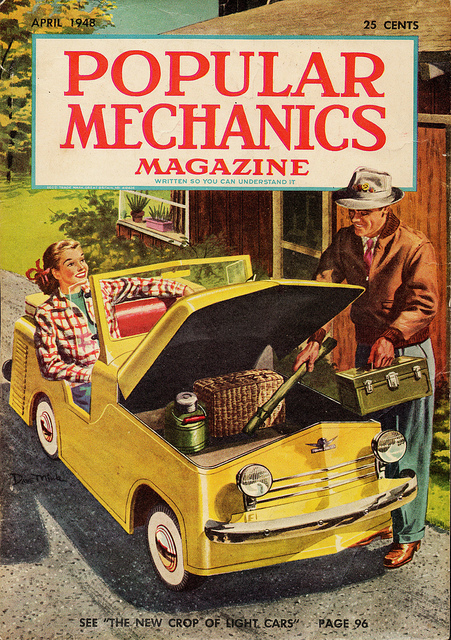
For many Americans, the end WWII brought new business and more opportunities for the domestic automotive industry. Most consumers, however, wanted more chrome and bigger automobiles to drive. A few more progressive auto companies at the time were already venturing into the small-car market such as American Motors and Germany’s Volkswagen. AMC was beginning to set a new and different standard in America when it came time to purchasing a second, smaller vehicle for additional family transportation needs.
Even in the late 1940s, small car projects were nothing new for most auto makers in the Detroit area. During WWII, all of the big three auto manufacturers began small car studies. In conclusion, The Town Shopper unfortunately did not make it to the assembly line production and some automotive historians have said that the Town Shopper was marketed for women as a low cost, two-passenger prototype that could have ease the burden of home life for families looking for that second economy car.
A special thanks to Robert Tate, Automotive Historian and Researcher, for contributing this story to the MotorCities Story of the Week Program.
For further information on photos please visit http://www.detroitpubliclibrary.org/ or email This email address is being protected from spambots. You need JavaScript enabled to view it.. Please do not republish the story and/or photographs without permission of MotorCities National Heritage Area.


